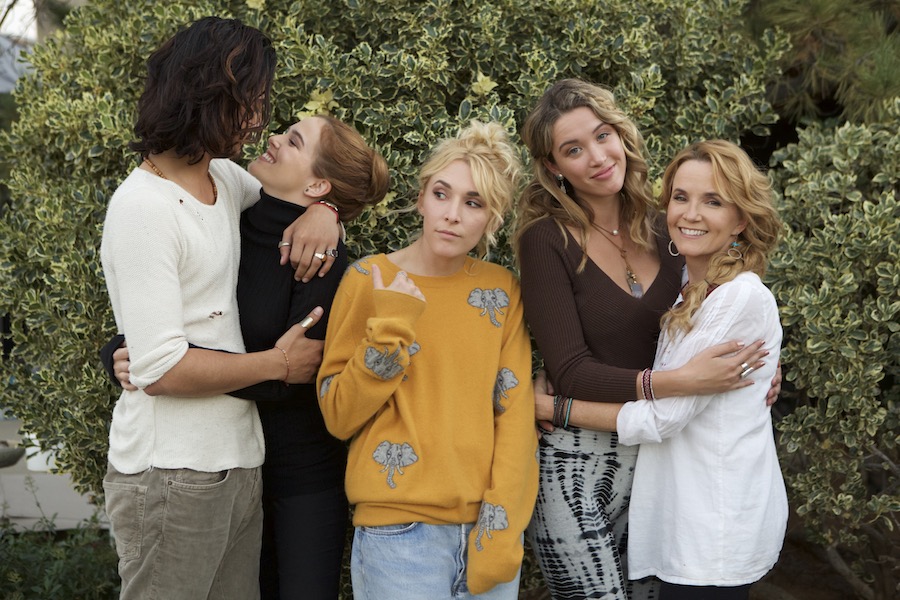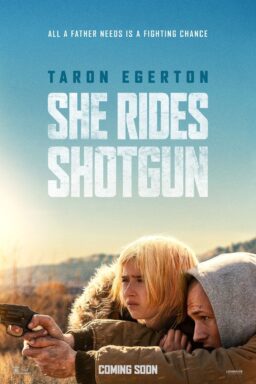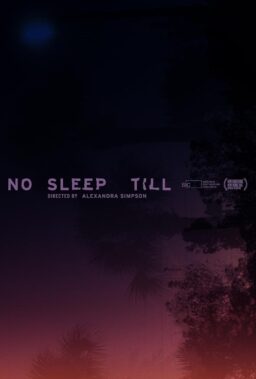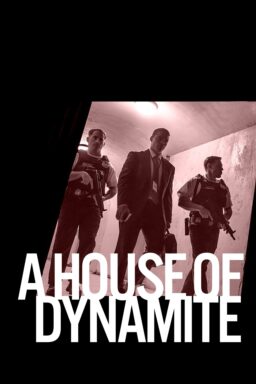Two of the best roles in the career of Lea Thompson revolve around characters who are haunted by their past. The first is a film practically everyone knows: Robert Zemeckis’ 1985 classic, “Back to the Future,” which remains one of the all-time great entertainments and served as the career launching pad for Thompson. She played Lorraine, the mother of Marty McFly (Michael J. Fox), whose meddling with time travel has forced him to play matchmaker to his teenage mom and dad (Crispin Glover).
The second film may be the finest acting showcase to date for Thompson, though it still has yet to receive the audience it deserves. In Jim Hemphill’s marvelous 2011 two-hander, “The Trouble with the Truth,” she plays Emily, a woman who reunites with her ex-husband (John Shea) for a dinner where they end up confronting their own beliefs regarding relationships, as well as their ever-simmering feelings for one another. In one of his final reviews, Roger Ebert awarded the film three-and-a-half stars, writing, “Part of the greatness of this film is that it not only avoids any simple answers, but it also takes us into the awkward contradictions and internal dishonesties that help us look at the mirror each day. […] It’s a conversation that many of us should have, but never will.”
After helming several episodes of her long-running series, “Switched at Birth,” Thompson has directed her first feature, “The Year of Spectacular Men,” which is about a young woman very much preoccupied with her future. She’s played by Thompson’s daughter, Madelyn Deutch, who also penned the script as well as several songs on the film’s soundtrack. For much of the picture, Madelyn’s protagonist strives to find her match—whether it be a role in front of the cameras (the cult horror comedy “Zombeavers” proves less than ideal) or a boyfriend behind the scenes. Madelyn’s own real-life sibling, Zoey Deutch, co-stars as her sister, and the ensemble includes some inspired comic turns from Jesse Bradford, Cameron Monaghan, Brandon T. Jackson and Nicholas Braun as the heroine’s potential flames. Prior to the film’s premiere on June 16th at the LA Film Festival, Thompson spoke with RogerEbert.com about her experience in the director’s chair, the joy of collaborating with her daughters and her greatest mission as an artist.
What has it been like having a place in the collective nostalgia of people all over the world for the past few decades?
It’s incomprehensible. I’ve heard that a person can only imagine seven items at a time, and that’s about it. When you realize that at least half of the people in America have seen “Back to the Future,” and that it is very important to so many of them, it’s such an honor. This movie is unique because it is spanning generations now. People who saw it in the theater as children were enjoying their parents’ nostalgia for the ’50s. Now those same people are showing the film to their own children, who are enjoying their parents’ nostalgia for the ’80s as well as their grandparents’ nostalgia for the ’50s. Many of the kids watching the film now have already seen me at an older age, so they’re not as freaked out when they see me in the earlier scenes. It’s easier for them to imagine me in different time periods. I couldn’t have asked to have been known for a better part. It was a great part in a great movie, and it still really holds up. I’m just so happy that I didn’t blow the audition. [laughs]

Your daughters are now around the age you were when you made “Back to the Future.” How do you see yourself reflected in their own artistic journeys?
I am so proud of them. There are a lot of genetics involved, since their grandparents were also performers. I really do appreciate their journeys, which are so different from my own, but for the most part, I can understand how they are feeling, no matter what they are going through. I really understand the rejection as well as the wonderful moments, and how most of those wonderful moments in our lives are tinged with some kind of disappointment or sorrow. There is always that double-edged sword except for when you are really in the art and you are creating in the moment. But when you are at a premiere, you feel super-insecure and it doesn’t feel like a victory. You’re often having two feelings conflicting within you at the same time.
There’s no substitute for working towards a common goal artistically with someone, and to really get to know them. Working with my daughters on “The Year of Spectacular Men” made the project extra-special. It all started after Maddie had endured a difficult year. She had just come back from college and didn’t really know what she wanted to do, so I told her, “Why don’t you write about that?” She was already a great songwriter and very capable of exposing herself. What’s hard about writing is the challenge of showing people what you’re really feeling and what you’ve went through. Whether it’s in a fictional context or not, you’re still exposing yourself, and I already knew that she could do that. It’s not something that I can do myself. I can act and direct, but it’s always behind someone else’s words. This script was a really personal mode of expression for Maddie, and her story is one that everyone in her generation can relate to in some way, shape or form. When I read the first draft, I was blown away by how honest it was and how funny and unique her voice was.
It was really fun to develop a way of communicating with her during the production. It’s hard to say, “Maybe you should try this,” or, “That part I don’t really get,” to any fellow artist, but even moreso when it’s your own daughter. Oftentimes daughters will be like, “MOOOOM! You don’t know anything!” [laughs] But Maddie and I really connected as artists, and it was such a special experience to work together. The whole process of making an independent film required so much tenacity and belief in the project. After having worked with so many different people in the industry, this film feels like the first piece of art that I’ve actually created myself, which is a great thing to have after all these years.
How did your previous collaborations with directors, as well as your own experience directing television, influence your approach to this film?
I feel like I have a unique perspective as an artist because I started out as a dancer. I grew up artistically adapting to different styles—from ballet to modern dance—and I felt like that was a mark of a really good artist. You had to be versatile in order to switch from Martha Graham to Marius Petipa choreography. I aspired to have that sort of versatility, and eventually aimed for that as an actress as well as a director. For this movie, I had very strong ideas of the images that I wanted to create—how I wanted them to look and feel. What was so wonderful about the producers that I had at Parkside Pictures was that they went along for the ride. They were down for allowing me to make the movie that I wanted to make.
Television informed me in the sense that it already gave me the chance to try different styles of directing and not feel hemmed in. Each story demands its own style that helps tell that story better, and that’s what is wonderful about being a part of so many stories. The nine million episodes that I’ve done of TV and the nine million independent and big studio movies that I’ve done have taught me that it’s ultimately all about telling the story in the best way possible. It’s not about showing off with fancy shots or big emotions. It’s about telling a story that people can relate to—taking the source material and doing it justice, while making it just a little bit better and clearer. That’s how I always approach my work as a director or as an actor.

There’s a Woody Allen-esque sensibility to the film’s opening scenes, with a jazzy score accompanying the rat-a-tat rhythm of the dialogue, which has a musical quality of its own.
I’m glad you saw that because that’s what we were going for. I’m really into finding the right rhythm, especially when I’m doing a comedy, but it was already in Maddie’s writing. She has a very specific voice and a specific style of comedy, so the rhythm came from how she wrote the script. The editing and the music were also important components of the movie, in terms of its rhythm. We wanted to reflect the youth of the movie in its soundtrack, and that led us to include over 20 songs, which is in itself very hard to put together on an independent budget. Since Maddie and I both have a background in music, it just felt natural for us to gauge the film’s pace. I always wanted the film to start out with a certain pace and then slow down at the end to show the growth of the character. She finds her center by the end, which causes the film to slow down and breathe more.
How did Maddie’s songs, performed with her group, “Bleitch,” inform the tone of the film?
It was interesting because while there are three songs in the movie that she had written prior to the project, she wrote two songs specifically for the film’s ending. They were directly inspired by the ideas that she had written for the last few scenes. It’s very rare that you have the lead actress/screenwriter of a film writing the songs and then performing them at the end, enabling her to say more than she had written for those moments. During the scoring of the movie, Maddie took the themes that she had written for the ending and had them performed by a jazz band for the opening scenes. The final themes are already in the movie at the beginning, but in a jazz form. Only the biggest music nerd would get that, but it made me happy and it made Maddie happy too. We didn’t have much time or money to make this film, so I was thrilled when she wrote those songs for the end. They fit the footage beautifully, and were written almost as score, which I think enriches the overall piece.
One of the pleasures of this movie is seeing you portray Maddie and Zoey’s mother. To what extent did your characters spring from your own bond with one another?
Maddie had always wanted to write a part for me and a part for Zoey, so when she started writing this movie, she basically tried to think about what parts we usually don’t get. That’s why it tickled her to write Zoey the way that she did and me the way I was. We’ve been acting around one another for years because we are always working together on auditions. They do self-tapes all the time now, so we’re always taping each other, and we had already worked out a lot of kinks in our collaborations. The character that Zoey plays in Maddie’s film is so funny and kind of unexpected. You don’t think of a movie star being super-domestic and so warm that she’s even nice to the little posse of super fans out in her front yard. It’s a fun and surprising take on stardom and Hollywood.
I’m not sure if I’ve ever played a lesbian before, but I was certainly fond of kissing my beautiful co-star, Melissa Bolona. She’s awesome and hilarious. I honestly didn’t think about my acting so much on this film, because I was concerned more with directing and getting the movie done. The difficult thing about directing myself, which I have done a lot of in the past, is that I always shortchange myself as an actor because I’m more worried about my directing duties. As you saw with this movie, there are so many locations and I was such a stickler about the look of each scene. Every single day, we were in a new set and I was trying to help the poor set-dresser because the locations are very complicated and rich.

One of your films that I grew up with was Nick Castle’s 1993 comedy, “Dennis the Menace,” where you played a woman who balances her role as a mother with her career. You’ve mentioned in interviews that you were essentially playing yourself in that film.
Yes, achieving that balance is difficult, and the challenge doesn’t go away. My kids are women now, and I still obviously spend a lot of time with them, considering I’ve made them make a movie with me. [laughs] I do feel, as a director, that I am benefiting from all the female directors who have gone before me. I really don’t feel much prejudice except occasionally from the older DPs, who can be difficult when working with female directors. But I feel like it’s easier now to work and to be a mother. I know my daughter Zoey has worked with a lot of female directors—maybe more than men—and right now she’s working with a director who’s pregnant and has a two-year-old. That’s really hard, but the world is kind of waking up to the fact that it’s okay to balance a career with motherhood. I was very adamant with myself to not act guilty that I was going to work when I was around my children. Even if I felt guilty, I never acted like it, and I think that was really beneficial to my children in helping them to grow up to be strong women. It’s obviously a juggling act and I feel like I did it mostly well.
Zoey recently worked with director Ry Russo-Young on “Before I Fall,” which could be linked with “Back to the Future” while using “Groundhog Day” as a connecting thread. All three films utilize time travel as a method to correct the past. It’s also worth noting how both “Back to the Future” and “Before I Fall” serve as a rebuke against bullying.
I thought that “Before I Fall” was really beautiful and I loved the timing of its release. There’s so much bullying going on right now, as if meanness has suddenly become an acceptable thing in our society. It was around last November when I started thinking, ‘All these people are being so mean. That gives me permission to be mean now, too. Doesn’t that feel great?’ It felt great for about half a second. Then I remembered that I have values, and that there is a way I have learned to live my life, which is, “Do unto others as you would have others do unto you.” That movie came along to remind us that it’s much better to be kind. We were put on this earth to take care of each other and be of service.
I think Zoey did a wonderful job in the movie. You can tell what’s going on in her mind without her having to say anything because she is so expressive. I don’t think that’s just coming from a mother’s perspective, I think that comes from a director’s perspective. One reason why people love the series “The Is Us” is because it’s really a show about time travel. People are fascinated by the idea of looking back at themselves and seeing what was really going on from the outside or even from the inside. That kind of retrospection is very powerful. “This Is Us” is a lot like “Back to the Future,” because you’re seeing your parents when they were young and understanding them in a whole different way.
The bullying these days has gotten so bad that many people have been comparing President Trump to Biff (Thomas F. Wilson) in “Back to the Future.”
I know. Poor Tom Wilson. [laughs] He’s the best guy ever.
When I interviewed Jim Hemphill about directing you in “The Trouble with the Truth,” he told me about your concept of “emotional improv.” Was that something you utilized while making “The Year of Spectacular Men”?
Yeah, absolutely. I didn’t have the luxury of having two cameras, which is the best way to engage in emotional improv, because you can get both sides of a conversation with the camera at the same time and you don’t have to match it. But I definitely tried to create a space where the actors could feel free to try different emotions and different ways to play each scene. I love all of the men that we cast in the film. They were so brave and funny and I owe them such a deep debt of gratitude because I had to pay them less than a million dollars each. They were such beautiful men and so willing to make fun of their own gender. I tried to create a space where they would be willing to let go of their “machoness,” particularly when we shot the film’s three completely weird and embarrassing love scenes.
You’ve said that your daughters were uncomfortable watching you make out with other men in films. What was it like directing Maddie in those sex scenes?
Poor Maddie. [laughs] On the very first day, she had to do the film’s last love scene with Nick Braun in front of her mother and her father—we were both sitting there behind the monitor. But Maddie is a pro, and so is Nick Braun, and they were frickin’ hilarious. Maddie hadn’t really done scenes like these before, and we didn’t have any time for rehearsal. She knew Nick, but she didn’t know Jesse Bradford or Brandon T. Jackson at all, so she had to just jump into her intimate scenes with them. She was a champ and they were champs too. I can’t express my adoration and love for those actors enough. Filming those scenes was really hard on them as well. Not only am I Maddie’s mom, but I’m also Lorraine McFly from “Back to the Future.” I’m always carrying that character around with me, and so for at least the first few minutes, it was a bit of a thing for them to get past.

Those scenes prove that you have the same gift as a director that you have as an actor—taking a scenario that could be creepy or repellant and making it human. When Lorraine is about to unknowingly make out with her son in “Back to the Future,” your performance brings such endearing humor to that moment.
It’s a very human moment. I think that the greatest gift that we have as artists is the ability to remind us all of how similar we are and how we’re all in the same boat. Helping people to gain compassion and understanding of each other is our greatest mission as artists and I know Maddie is really proud of our movie for doing just that. It’s really about loving all the foibles and problems and pettiness and ugly little bits that make up every human being. All of those little things are what make people lovable in a lot of ways. You know how when you get a new iPhone and it seems so dumb at first? As soon as it starts to get a little broken down and develops weird quirks—like the number of times it requires you to turn it off and on again—you suddenly start to get a little affectionate towards it. It’s not the perfection in people that we actually love. It’s the little quirks and cracks and Crow’s-feet that we end up loving about each other, and that’s what I love about human beings. I like to show the little cracks in them.
What spoke to me in the film was this idea of finding closure not in a relationship but in yourself. Making this film seemed to offer Maddie closure about her own experiences.
There were two overarching themes in the film that we tried to tackle as subtly as possible, one of which was about how secrets can destroy your life—either by keeping them or feeling them but not knowing them. As we were making the movie, we were surrounded by some really tragic deaths, and it got us thinking about how death effects us. Our memories of people who’ve passed away and our own fear of death are with us at all times. Those were the deeper themes of the film that we were thinking about while we were making it. I’ve noticed that keeping secrets in families really hurts people and it’s important to have closure on them. You have to be open and honest about things.
When I was having my kids, I read Dr. Spock’s Baby & Child Care, which is an old book, but it was written by a great guy. Dr. Spock talks about how it’s really important that kids feel things. If you lie and hide what’s actually happening, all that will do is inform your kids that you’re lying to them and they’ll make up their own stories. But if you tell them the truth—whatever is age-appropriate—your kids will know that they can count on you, and they won’t drive themselves crazy thinking that they are feeling something that doesn’t exist. So I took that to heart and I think it’s really important. In the film, we try to convey how once you’ve embraced the truth, you can find solid ground and see your path more clearly.
Too many teen-centric movies center on female protagonists who are defined by the men in their lives, but this film is about a young woman finding herself. There’s a real sense of gratitude at the end. It’s not about what Maddie’s character has lost, but what she has gained within the losses.
It’s really lovely that you saw that in the film. Maddie was very adamant about what she wanted. Of course, we were all like, “We better shoot a different ending just in case.” Luckily it didn’t work out because the other actor turned out to be unavailable, and Maddie knew exactly where she wanted her character to be in the end. We still had to finesse it in a way that hopefully feels satisfying. The belief that everything in your life, good and bad, makes you who you are is a very spiritual perspective. You are the sum total of all the people that you’ve loved or that you’ve met. In order to find peace, you have to feel grateful for all the things that make you who you are and have taken you to the spot where you are right now. We didn’t want the film to be man-hating in any way. Maddie really tried in the writing to be as culpable for the problems with the guys as they were. They were all kind of self-absorbed and just not on the same track. Maddie came up with such interesting details—like the fact that Nick’s character can only talk to his phone, which makes her character go, “Forget it, I don’t want to be with you. I’m right here! You can’t talk to me?” What we aimed to do was make a nontraditional traditional movie, and I think we accomplished that goal.
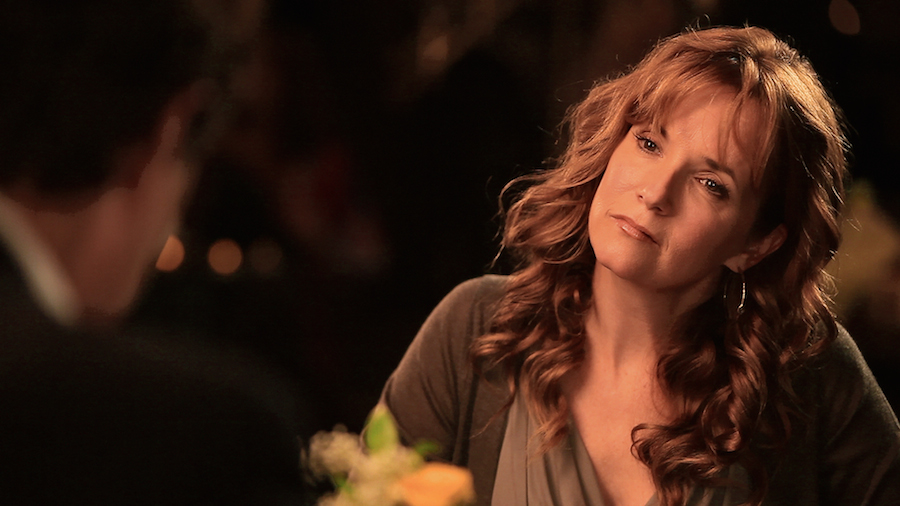
I must also ask you about the experience of making “The Trouble with the Truth.” Your performance in that film is just incredible.
Thank you! I love that movie so much. I had been an actor for so long, and I had never seen myself be so honest—like even close—before on film. It’s all about the writing and the directing. It’s not like I decided, “Oh gee, I’ll be dishonest while I’m acting.” I’m trying to service whatever the piece is. The film is so unusual and the way he shot it with two different cameras was so great. It really allowed for the emotional improv that I was talking about earlier. I could laugh on one take at a certain line or I could cry on the next take at the same line. I didn’t have to worry about the other actor being mad because he wasn’t reacting to the same thing that I was doing. It was such an opportunity for us to be free and honest in the same moment. There’s an alchemy that happens where everything clicks into place, and it is rare. It happened on “Back to the Future,” and it also happened on “The Trouble with the Truth” as well. Without any rehearsal, we all got into the same flow and created something together that was unique and special in that moment. It’s super-rare for actors to all line up and be comfortable with the writing.
I didn’t even know John Shea at all. I’d worked with him on the miniseries, “A Will of Their Own,” but he was playing my evil husband and I was busy with other stuff. Before starting “The Trouble with the Truth,” I bumped into John at an event where he was talking about his theater company. I could see that he was awesome and that he was unafraid of memorizing lines. If I hadn’t bumped into him that day, I’d never have thought of suggesting him for the role in Jimmy’s film. Jimmy immediately loved the idea, John got on a plane and I was acting with him the next day. It was crazy. Sometimes you get into a certain flow as an athlete or an artist or a writer—I’m sure you’ve felt this before. Sometimes you sit down at your typewriter and all of a sudden, it just comes out, and an hour later, you’ve got something really great. When you’re in that flow, it’s like magic, and I feel like that happened with this movie.

